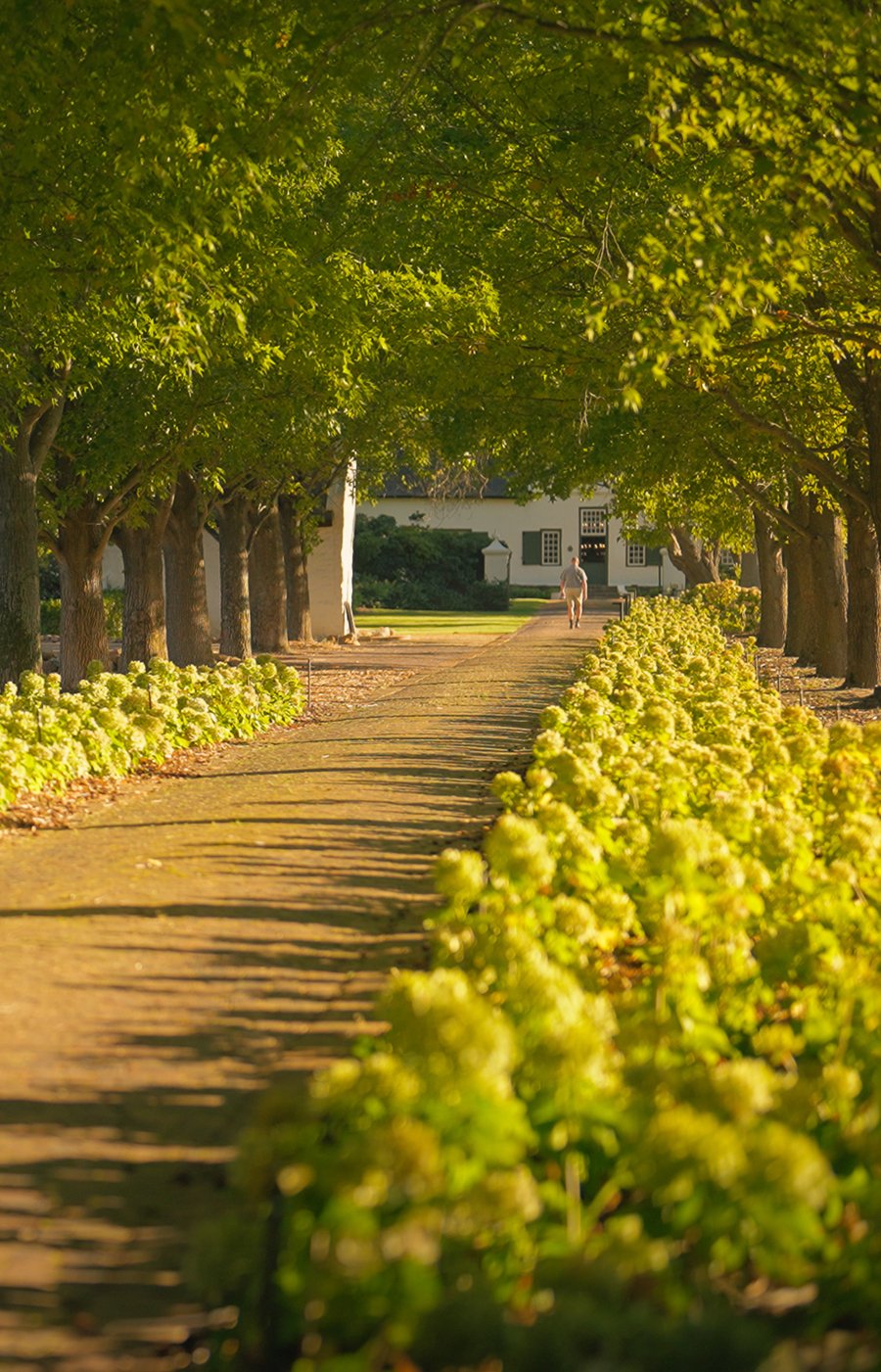HAUTE CABRIÈRE PINOT NOIR RÉSERVE
South Africa boasts a long, fruitful history of winemaking dating back to the 17th century. It’s a story of daring pioneers succeeding against the odds, fleeing persecution and laying down new roots in a foreign land. The Western Cape’s Franschhoek (French Corner) region, in particular, is a treasure trove of heritage and history, but is also the place where South African wine first had a major breakthrough. The story of Haute Cabrière is richly interwoven with French Huguenot heritage and home of the famed Pierre Jourdan.

ONCE UPON A TIME IN THE CAPE OF GOOD HOPE
By the year 1692, precisely 201 French Huguenots had settled in the Cape. A century after establishing the Calvinist Reformed Church in 1550, they had become religious outcasts in France – fleeing persecution during the reign of the fiercely Catholic King Louis XIV. Many Huguenots found refuge in Germanic Europe, England and America, while others ventured to the southernmost tip of Africa.
Arriving in the Dutch-governed Cape of Good Hope, these francophone Reformists, who shared similar beliefs to their Dutch cousins, were welcomed with open arms. They were even given land by then governor, Simon van der Stel on the condition that they fully integrate into local Dutch culture, adopting not only the language, but Dutch morals – such as they were – as well.
Given their particular talent for viticulture and oenology, they were scattered across the Olifantshoek and Drakenstein regions – modern-day Franschhoek and Paarl respectively. Many believe that the Afrikaner adage, ‘n boer maak ‘n plan (similar to the English proverb, where there’s a will there’s a way), alluding to the culture’s trademark tendency to persevere against the odds, originated with the Huguenots, who were made more resilient and determined by their ordeal.
Van der Stel’s vision paid off. The Huguenot settlers’ industrious work ethic and agricultural skill drastically improved the quality of Cape wines and within a generation, they had fully integrated into local society – some even adapting their family names, like Villion to Viljoen, to better accommodate the Dutch palate.
MEMORIES OF CABRIÈRES D’AIGUES
On 22 December 1694, Huguenot settler Pierre Jourdan, was granted a piece of land in Olifantshoek. As was Huguenot custom, he named the farm after his hometown, Cabrières d’Aigues (pictured above) and so, bestowed the name Cabrière on the land. Although the records of this period are vague, he married his wife, Anne, in 1696 or 1697, and they had three children together.
20TH CENTURY CABRIÈRE
In the 1980s, the South African wine industry was on the brink of a new golden age. Although illegal to grow at the time, it had been discovered that Chardonnay could flourish in the Western Cape (if only the authorities would play along), new wine-growing regions were being explored and enhanced winemaking techniques were innovating the wine landscape on a global scale.
Achim von Arnim, who was the cellar master at Boschendal in the early eighties, purchased a portion of the Cabrière farm in 1982 with the goal of producing wines in the style of France’s Champagne region. Indeed, he soon became known as the Franschhoek region’s pioneer of wines produced in the Champagne style, Méthode Cap Classique, and was one of the first winemakers in South Africa to grow the Chardonnay grape after its legalisation. He studied winemaking at the renowned Geisenheim Wine Institute in Germany, during which time he spent his weekends in France to learn more about Chardonnay and Pinot Noir – the estate’s exclusive signature varietals.
A few years later, von Arnim saw potential in another piece of land on the slopes of the Franschhoek Mountains that reflected a similar terroir to the winelands of Burgundy in France – a region famed for its Pinot Noir. He extended his farm and named his newly acquired piece of land – higher up the slopes of the Franschhoek Mountains – Haute Cabrière.
Hildegard, Achim’s wife – and mother of Takuan, Tanja, Zoe and Tamo – herself hails from a wine-producing family in Germany, and has worked closely with Achim since the start of Haute Cabrière. She has often been described as the sun around whom they all revolve.
In 2013, von Arnim passed the torch of cellar master to his son, Takuan, opening the door to a new generation of winemaker at Haute Cabrière.
According to French tradition, Haute Cabrière’s Méthode Cap Classique wines are named after the estate’s original founder, Pierre Jourdan, and all still wines are produced under the Haute Cabrière label.
TASTING NOTES
Dark fruit flavours are layered with juicy red fruit, soft tannins and complemented by well-integrated acidity
PAIRING SUGGESTIONS
Such a delicately balanced wine pairs extremely well with lighter fish dishes. In the début issue of JAN the Journal, Jan Hendrik and his sommelier at Restaurant JAN chose Haute Cabrière’s Pinot Noir Réserve as the perfect accompaniment to his tuna, mealiepap panna cotta and chakalaka dish (above right).














